page 1
~ The Study of Threes ~
http://threesology.org
| Hybrids page 1 | Hybrids page 2 | Hybrids page 3 | Hybrids page 4 | Hybrids page 5 |
| Hybrids page 6 | Hybrids page 7 | Hybrids page 8 | Hybrids page 9 | Hybrids page 10 |
| Hybrids page 11 | Hybrids page 12 Playmate God |
Hybrids 13 Economics 1 |
Hybrids 14 Economics 2 |
Hybrids 15 Economics 3 |
| Hybrids 16 Economics 4 |
Hybrids 17 Economics 5 |
Hybrids 18 Economics 6 |
Hybrids 19 Economics 7 |
Hybrids 20 Language 1 |
| Hybrids 21 Language 2 |
Hybrids 22 Language 3 |
Hybrids 23 Language 4 |
Hybrids 24 Physics |
Hybrids 25 |
| Hybrids 26 | Hybrid 27 |
Visitors as of 30th July, 2021
A study of Hybrids and Hybridization leads us to suggest that there is a currency of recurring thought processing models and... let us assume for the moment, environmental influences which affect such models (effects)— that we need to take a closer look at and keep vigilant of them, so as to determine what, if any changes to the underlying cognitively "hybrided" patterns that:
- were present along the scope of history (before recorded history... including cognitive forms used by early hominids)— such as those we see in examples called mythology
- are now present (and not just typical mythological or vehicle-defined hybrids)— such as seen in computers and other electronic, mechanical and chemical combinations
- and whether or not there is a diminishment, increase, or deliberate attempts by some to conceal the basic patterns...
Most things, animate and inanimate, are not considered to be hybrids... but normal and natural, if not for a given era, then for all of life since its inception... such as basic genetic items (DNA, RNA, Proteins, etc.) Yet, if we view a hybrid as a mixture, then even "pure water" is a hybrid since water is made of two atoms of hydrogen and one of oxygen. Therefore, another way of saying this is to claim that a distinction of "purity is based on human perceptions of quality and quantity... though there also exists the comment of something being "pure evil"... though this designation is probably linked to activity and not physical attributes.
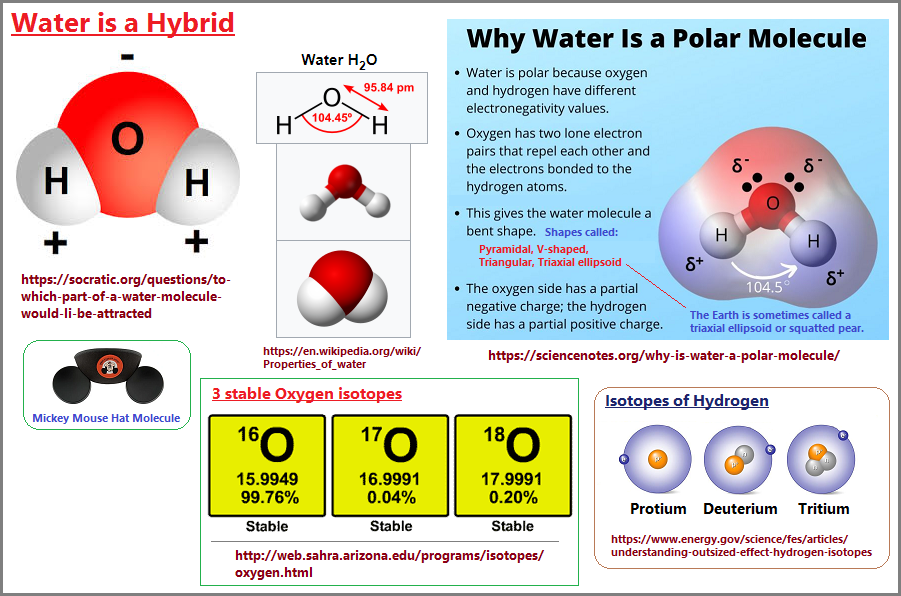
Water is a compound, while Nitrogen and Oxygen are considered elements. Whereas water is a composite that can be broken down into elements, Elements are said to stable in the sense that they can not be broken down into smaller substances by chemical means. However, elements are made of atomic nuclei and therefore themselves Hybrids by being composites. And we can break down Protons- Neutrons- Electrons into simpler, more fundamental particles like Quarks. And what of quarks? Are they indivisible or do all sub-atomic particles continue to have ever-increasingly smaller substances, even if we today can not detect them?
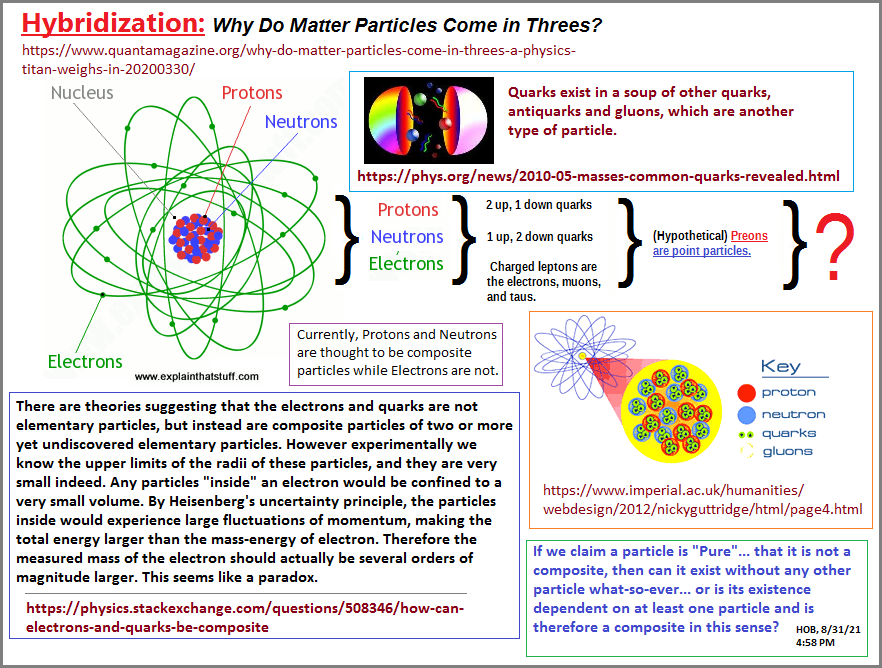
Water is the offspring, so to speak, of nitrogen and oxygen. The words compound and hybrid are in this sense inter-changeable. However, one might argue that a Compound is linked to an intermediary stage between elements and mixtures, and therefore we have a three-stage process in the development of a "mature" or advanced hybrid. In a sense:
- the one element profile is primary (singular/one)
- the compound is the secondary profile with a reference to two atoms forming a molecule
- with a mixture making up the third profile.
With respect to designating something as pure and impure, the standards we use are based on observations attendant with specificities of recurring phenomena. That which deviates from this set standard is labeled as being impure. (The set standard was initially an arbitrary choice which gained a following and acceptance based on similar dispositions of observation, collation, and then labeling.) Yet Purity is not only linked with a repetitive-constant under given conditions, but also speaks to the consistency of the material involved, such as water. In other words, if water was not so ubiquitous (almost everywhere), it might not be considered as a constant... as we sometimes judge the lack of rain in a given region, or its inter-mittency in other areas whose condition were not known until meteorology came onto the scene for providing an explanation.
(Reference: Elements, Compounds & Mixtures)
Elements
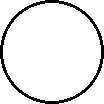 Microscopic view of the atoms of the element argon (gas phase) |
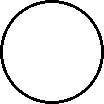 Microscopic view of the molecules of the element nitrogen (gas phase). |
Note that an Element:
- consists of only one kind of atom,
- cannot be broken down into a simpler type of matter by either physical or chemical means, and
- can exist as either atoms (e.g. argon) or molecules (e.g., nitrogen).
A molecule consists of two or more atoms of the same element, or different elements, that are chemically bound together. Note that the two nitrogen atoms which comprise a nitrogen molecule move as a unit.
What is the difference between a compound and a molecule?
- A molecule is formed when two or more atoms join together chemically.
- A compound is a molecule that contains at least two different elements.
- All compounds are molecules, but not all molecules are compounds.
Types of Compounds - Ionic, Molecular and Acids
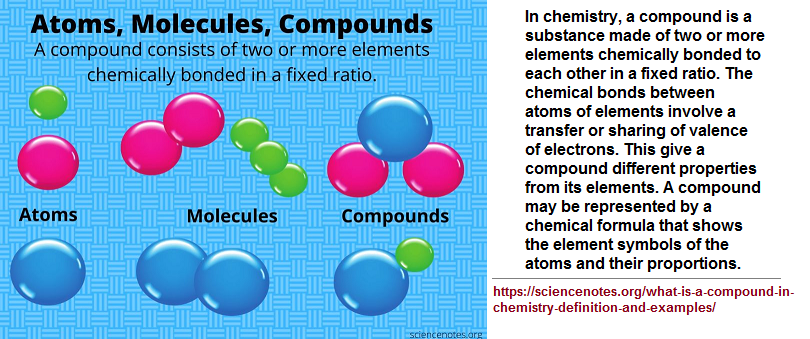
Compounds
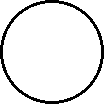 Microscopic view of the molecules of the compound water (gas phase). Oxygen atoms are red and hydrogen atoms are white. |
Note that a Compound:
- consists of atoms of two or more different elements bound together,
- can be broken down into a simpler type of matter (elements) by chemical means (but not by physical means),
- has properties that are different from its component elements, and
- always contains the same ratio of its component atoms.
Mixtures
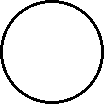 Microscopic view of a gaseous mixture containing two elements (argon and nitrogen) and a compound (water). |
Note that an Mixture:
- consists of two or more different elements and/or compounds physically intermingled,
- can be separated into its components by physical means, and
- often retains many of the properties of its components.
Some people do not like other to acknowledge basic patterns of behavior and thought so as to maintain a presumed level of insight which they can use for ulterior motives at the expense of one or more others that are too naive to witness the currency of repetition. Others like to dismiss the notion of repetition in order to suggest progress is being under-taken when in fact there is an opposite... a type of retro-gression in the guise of conservation taking place. We need to establish a more comprehensive grasp of what is meant by hybridization as it is occurring... particularly in the different ideas within, between and apart from different subjects.
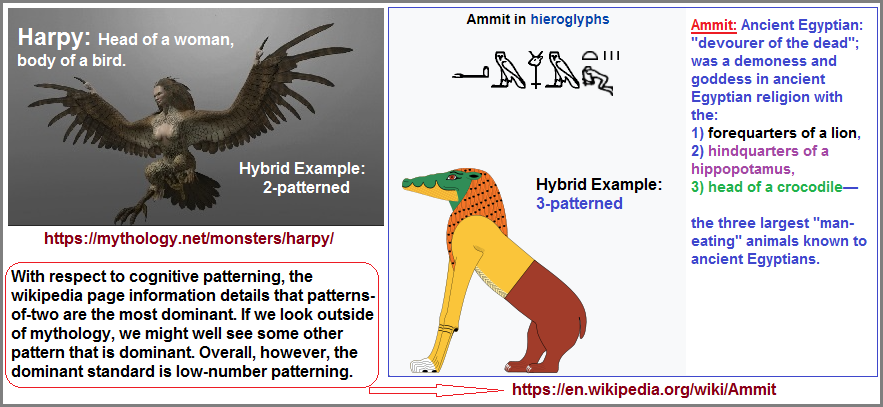
I will be looking at hybridization with a very broad perspective and not merely those associated with mythological creatures, plants and animals, as well as technological examples such as cars, televisions, and other appliances. When looking at hybrids, it is of need to point out that the usage of "half this" and "half that" to describe a certain creature is often a poor assessment of proportionality. It is more like a generalization. No less, whereas we might say that the hybrid nature of gunpowder is based on thirds, we actually denote a slightly different proportionality and that the "three" mixed substances has somehow been used to sometimes define the overall mixture by saying it has three parts... without actually describing any specific proportionality beyond this. The three components of this hybrid mixture are: potassium nitrate (75% by weight), charcoal (10% by weight), and sulfur (5% by weight). (How Gunpowder Makes Explosions by Leslie Baehr, Compound Interest, Jul 9, 2014, 8:48 AM)
When speaking of the hybridization of gaseous content in air, we find that air is composed of: (What is the atmosphere?)
- about 78% nitrogen (N2)
- about 21% oxygen (O2)
- while Argon, carbon dioxide (CO2), and many other gases are also present in much lower amounts; each makes up less than 1%.
But... we humans have difficulty with proportionalities. We tend to generalize and accept the generalization as a taken-for-granted fact. For example, we speak of a quarter moon or a full moon, but neither proportions are actually accurate. The same goes with movement in the sense we say the Sun comes up and goes down, but neither of these are correct. The Sun does not move in this sense... and as for the Earth going up and coming down, these descriptives are inaccurate as well. The point is that when we describe something in a pattern-of-two way such as a half-man and half-beast, the "half" is a generalization.
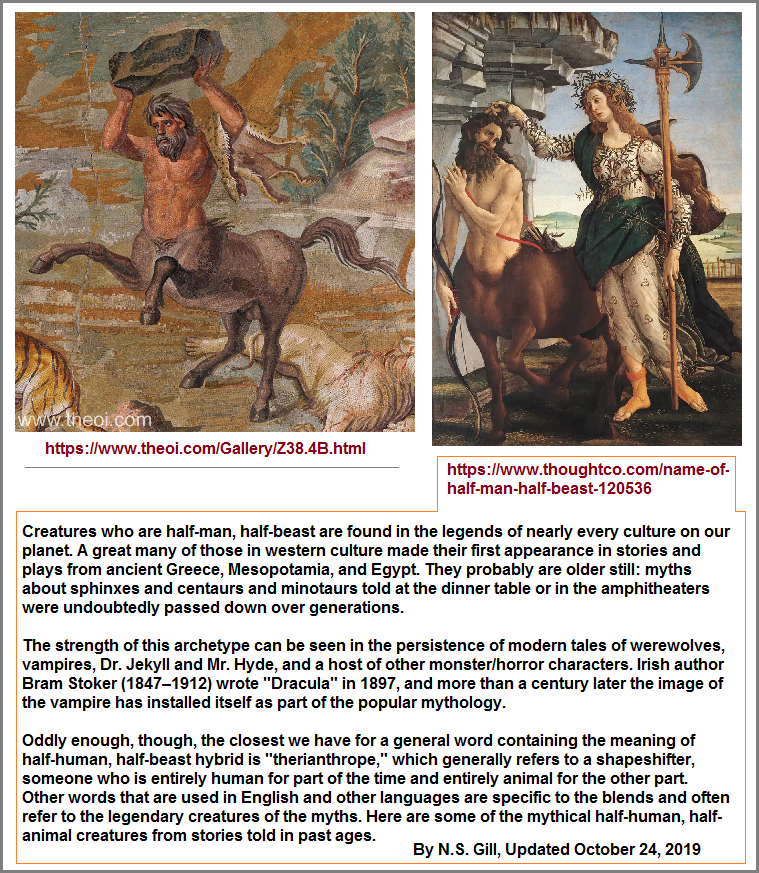
Granted that chemical proportionalities are not typically viewed as hybrids... at least not with the usage of the word "hybrid", but I want to view the idea of hybridization from a very broad perspective because the idea of a non-hybrid "singularity" brings to mind that our physics and cosmological notion of a space-time (or gravitational) singularity may or may not have existed. In other words, when we argue between whether the chicken or egg came first, they may have originally belonged as a single item which bifracted... or trifracted (etc...), though ideas still bounce around the usage of dichotomies such as those found in the yin/yang profile. Whereas the Yin/Yang is portrayed as a composite, it reminds me of an egg cell which has divided... and we have no conception of what the original... singular egg looked like or if it even existed.
Ever since scientists first discovered the existence of black holes in our universe, we have all wondered: what could possibly exist beyond the veil of that terrible void? In addition, ever since the theory of General Relativity was first proposed, scientists have been forced to wonder, what could have existed before the birth of the Universe – i.e. before the Big Bang?
Interestingly enough, these two questions have come to be resolved (after a fashion) with the theoretical existence of something known as a Gravitational Singularity – a point in space-time where the laws of physics as we know them break down. And while there remain challenges and unresolved issues about this theory, many scientists believe that beneath veil of an event horizon, and at the beginning of the Universe, this was what existed.
In scientific terms, a gravitational singularity (or space-time singularity) is a location where the quantities that are used to measure the gravitational field become infinite in a way that does not depend on the coordinate system. In other words, it is a point in which all physical laws are indistinguishable from one another, where space and time are no longer interrelated realities, but merge indistinguishably and cease to have any independent meaning. (What is a Singularity? by Matt Williams, Feb. 16, 2011)
Why in the world concoct the idea of a supposed "singularity" when it is anything but? It appears to be the wrong word if one is thinking about a "before time" or point of genesis which inclines me to think of a situation where the conditions were where no hybridization yet existed.
If a singularity does or did (or will?) exist, it may now be so convoluted with mixtures that we are unable to distinguish it because we have a mentality where hybridization is too routine in our thinking processes... thus preventing us from recognizing what an actual non-hybrid state might be.
For example, when we think of a demigod as being part human and part god, the human is a hybrid in many senses. For one, its cells are a conglomeration of organelles. Hence, we have a hybrid situation. However, let us note the controversy over whether a cell has a Bi-lipid membrane or a Trilaminar Membrane. Looking at the membrane one can refer to it in either way, but I'm inclined to label it as three layers. But the point I want to make in regards to distinctions of the organelles, is that we can find some (supposedly) with two layers, and others with one layer, as well as some items that are said not to have a membrane: Organelle
| 3 | 2 | 1 | 0 |
| Three Membranes | Two Membranes | One Membrane (and those not quantified) |
(Supposedly) No membranes |
| Overall Cell? (said to have a Trilaminar structure) |
Overall cell? (said to be a Bi-lipid structure)... the "bi" (two) is being emphacized even though there are more than two structures involved... Nucleus Mitochondrion Plastid |
Lysosome Endoplasmic reticulum Golgi apparatus Vacuole |
Ribosome Nucleosome Centriole Cytoskeleton |
What I am looking at in the above listing is the quantification in terms of evolutionary development... like a one, two, three maturational development sequence. Hence, is a non-composite entity a purity... with no possible division into smaller constituents (atomic particles notwithstanding)? Or is it that current techniques and research orientations are biased and not cognizant of an associated numerousity linked to developmental sequencing involving low number valuations?
Likewise, Evolution has created present humanity from a series of changes from a presumed pristine creature that was itself a hybrid of earlier life forms. Likewise, when we view life on the atomic level, we find that atoms are made up of smaller integrated parts like protons, neutrons, electrons, quarks, neutrinos, baryons, muons, etc... What in the world would an actual singularity be if we stripped away all the components? Likewise, has there ever been an atom without the sub-atomic particles, or is this an entity which existed in the remote past before the development of atoms as we know them? How did the atom evolve if the 3 "organelles" of an atom (protons, neutrons, electrons), followed an evolutionary-style of development?
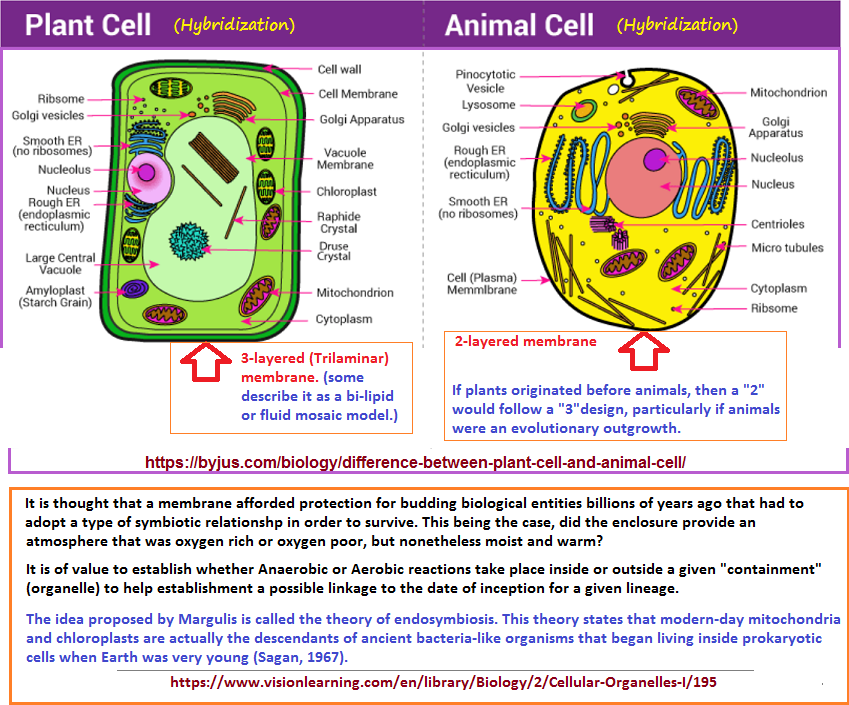
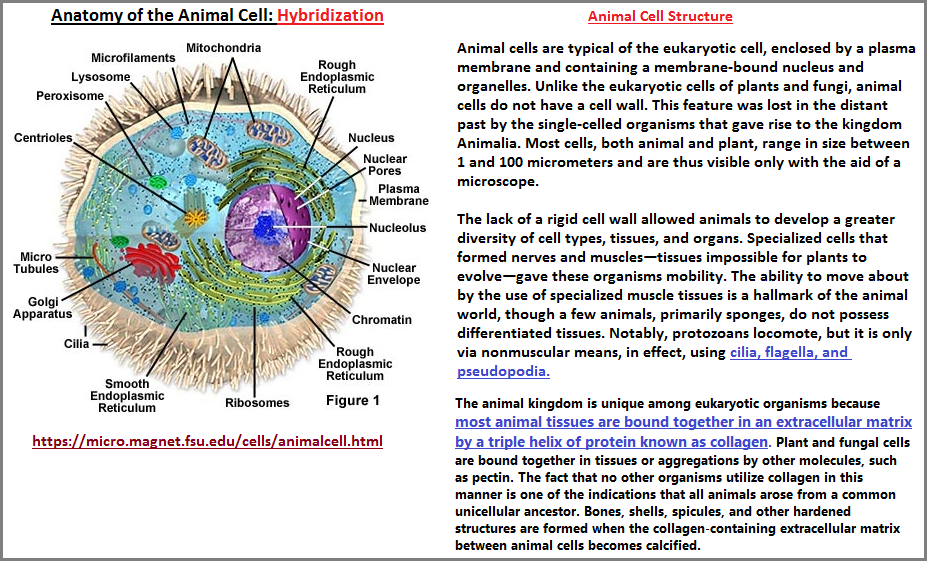
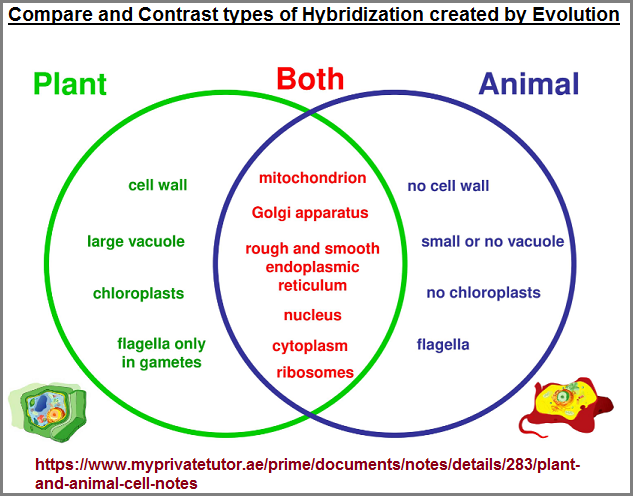
Whereas some think that a singularity is where all physical laws are indistinguishable from one another, this does not present us with what might be termed a "before-there-was-a-hybridization" entity or circumstance, it simply presents us with a different type of composite of multiple laws. We have simply exchanged one type of hybridization view for another. This is just as silly as speaking of an Uncertainty Principle when the very existence of such a principle... in a sense, provides us with a certianty, because if the "U-P' notion is valid then it is a certainty... and that's the downside to it. We might as well have a downside principle since we humans are inclined towards creating dichotomies as well as trichotomous views. (I will stay away from citing the concept of a single universal god as an uncertainty principle... though such a perspective may have somehow influenced the physics application.)
Quantum mechanics is generally regarded as the physical theory that is our best candidate for a fundamental and universal description of the physical world. The conceptual framework employed by this theory differs drastically from that of classical physics. Indeed, the transition from classical to quantum physics marks a genuine revolution in our understanding of the physical world.
One striking aspect of the difference between classical and quantum physics is that whereas classical mechanics presupposes that exact simultaneous values can be assigned to all physical quantities, quantum mechanics denies this possibility, the prime example being the position and momentum of a particle. According to quantum mechanics, the more precisely the position (momentum) of a particle is given, the less precisely can one say what its momentum (position) is. This is (a simplistic and preliminary formulation of) the quantum mechanical uncertainty principle for position and momentum. The uncertainty principle played an important role in many discussions on the philosophical implications of quantum mechanics, in particular in discussions on the consistency of the so-called Copenhagen interpretation, the interpretation endorsed by the founding fathers Heisenberg and Bohr.
This should not suggest that the uncertainty principle is the only aspect of the conceptual difference between classical and quantum physics: the implications of quantum mechanics for notions as (non)-locality, entanglement and identity play no less havoc with classical intuitions. (The Uncertainty Principle by Jan Hilgevoord)
The topic of hybrids is of interest in the "Study of Threes" since it represents yet another indication of cognitive limitations... including a limit to our (on Earth) type of human imagination. Whereas I have made a reference to the limitations found in the types of favorite numbers customarily reported, which involves superstitious as well as Natural numbers, the triple code of DNA, the recurring threes configurations found in particle physics, ancient designs of columns, the Periodic table of elements, the axioms of Mathematics, engine designs, and other items; I have not as yet brought anyone's attention to the limitations found in the hybrids of creatures found in Myth, folklore, fantasy, science fiction, and various mechanical devices such as vehicles... though the limitation of other kinds (formulas) exist as well. And let us not overlook the hybridization of the human body by way of "armaments" labeled as sports gear, to include specific training regimes, specific nutrition regimes, etc...But let me not fail to also include the many types of hybridizations taking place by those in their change of clothes, makeup, cologne/perfume, jewelry, diets, etc... Hence, "hybridization" by way of adding alternative muscle, alternative skeletons, losing weight, learning some skill (perhaps multi-tasking), removing bad habits, maturing, (rite-of-passage) etc... are all transformations which need to be addressed in our analysis. And it is a rather curious thing that patterns-of-three crop up as a recurring theme. However, whether three, two, four, or otherwise, we continue to witness low numbers being used which suggests an "inforced" conservation.
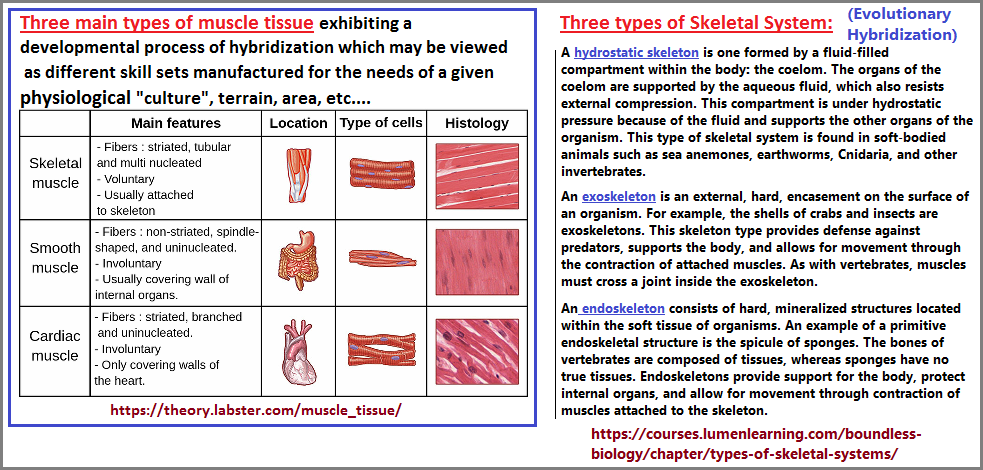
Are not the many different forms and formulas of mathematics... examples of hybridization? Where then is the basic form of math... or is all of math the result of a hybridization of earlier ideas not necessarily to be labeled as simple math, counting or other numerical activity? Is all of life and the entire Universe, not but the activity of various forms, but basic formulas of hybridization? (H.O.B. 8/19/2021)
Indeed, a closer look at some important equations provides a distinct tell-tale indication of how very much hybridization has been engulfed by Mathematicians... except that similar variations of the same hybrid thems continue to crop up:
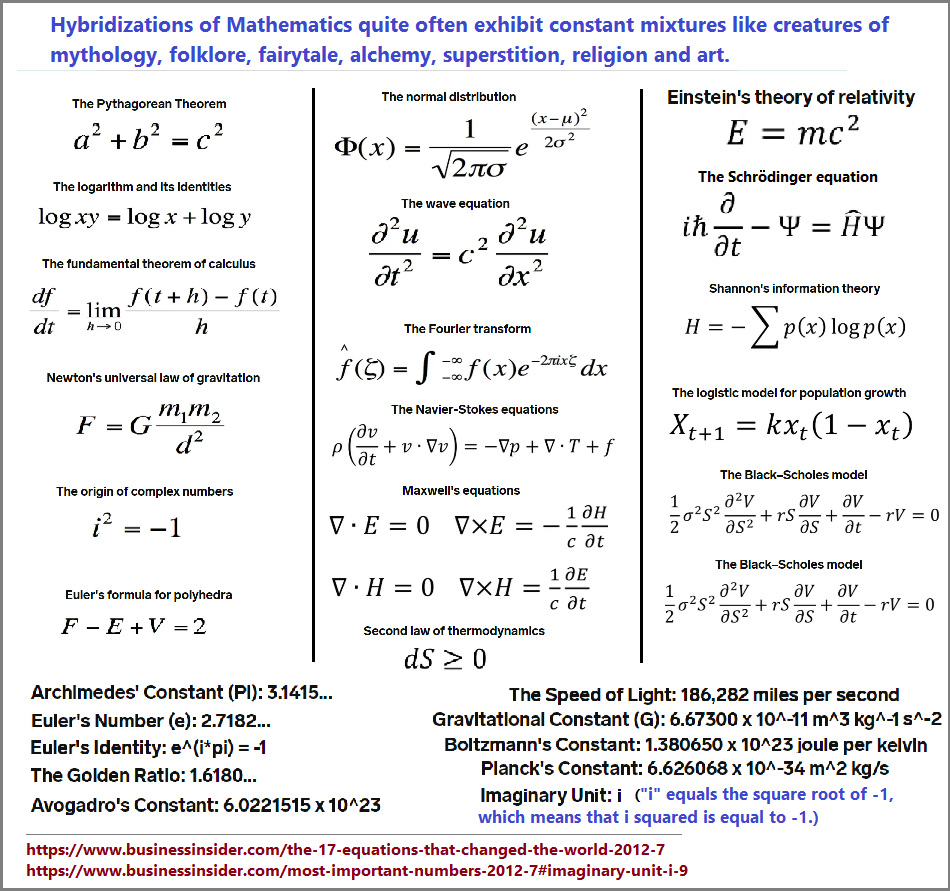
In speaking of formulaic representations of hybrids, a simple observation describes simple underlying mathematical operations taking place. Indeed, mathematics exhibits its own mythology of hybrids. For example (taking into consideration simple math operations ordering):
- Parenthesis: parenthetical emphasis is given to a certain quality such as a single eye, snakes for hair, a thunderbolt for a spear, an increased compression ratio, a clearer perception, greater strength, endurance, stamina, virility, able to leap high, fly, etc...
- Exponent: an identified or ghostly companion figure which increases a given act, activity, position, time allotment, attribute, etc...
- Multiplication: multiple limbs, multiple eyes, multiple languages, etc...
- Division: A whole can be divided into proportions, yet those proportions may be guesstimations which are poorly (inaccurately, though culturally acceptable) illustrations, such as by describing the Minotaur as a "half" man and "half" bull, yet there is a bull's head, a human torso, and a bull's hind quarters.
- Addition: parts, attributes, or abilities are added to a standard model such as a human being given one or more godlike powers. (No subtraction takes place in a simple case. More complex cases involve other mathematical operations.)
- Subtraction: a characteristic that has been removed from a creature or piece of technology differs from a situation in which that part, attribute, or ability did not exist in the first place. It is an important distinction to be made.
- Proportionality: this criteria has been poorly taken into account by those who claim to study hybrids in an serious manner
- Fraction(s): "fractionation" goes along with proportionality into the domain of Calculus, Algebra and Geometry. The geometric designs of partitioning has not been researched as it should be.
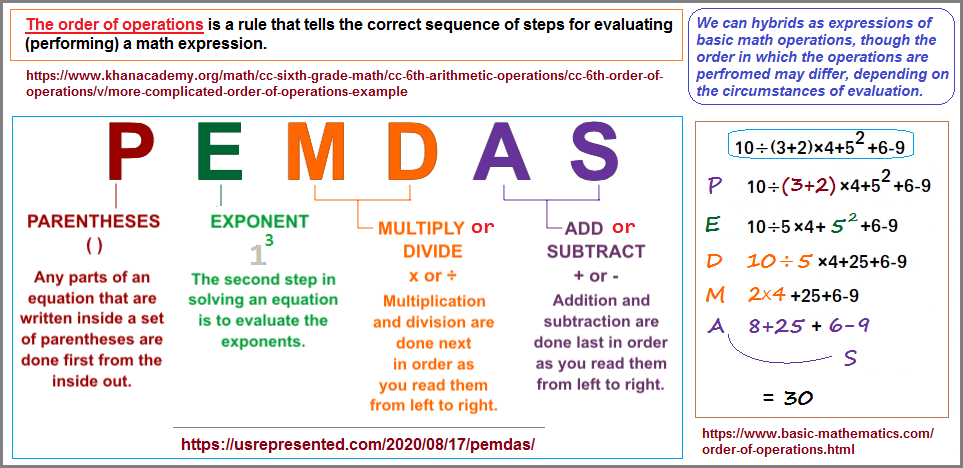
In thinking about the "three", one must accept the notion which inclines us towards viewing the value of three as a hybrid itself. Unless we wish to view, all, most or some of the Natural numbers as standing apart from as true singular entities like a presume pure-bred species (,... that is, not the result of a hybridization such as 1 + 1 + 1 = 3 or 1 + 2 = 3, or some other such manufacture involving subtraction, multiplication, division or multiples thereof; we are confronted by the need for making a definition of "hybrid". Are we to cast the word as a single entity itself, or is it too a reference concerning multiple values such hybridization by way of molecules, amino acids, sounds, smells, contours, position, duration, proximity to (or distance from) one or another other pure-bred or hybrid? Indeed, do we always rely on one or more contrasts to identify some notion of hybridization? Whereas we have the term "half breed" applied to a person who is thought to be one-half one race and one-half another race, a DNA genetics profile may actually reveal that a person arises from several cultures, such as Native American, Anglo, Hispanic, African, Asian or whatever. The point to make is whether the idea of "mixture" is sufficient enough for a comprehensive appreciation of hybridization?
Instead of looking at the "three" (or whatever value you are interested in), solely in terms of a defined number/quantity, it may be of and extended value to view it as a type of recurring hybridization. It can be viewed as a formulaic type of hybridization. Sometimes we see a pairing of elements such as Major and Minor Premise which serve as a pair in terms of a opposite-ended dichotomy (and not necessarily oppositional), where the third element "conclusion" can be viewed as a "2" value if we say that the pairing is like saying 1 + 1. Hence, in this view, the triad of Major Premise- Minor Premise- Conclusion is an embellished dichotomy posing as a trichotomy. As if human consciousness is seeking to portray having reached a "three" cognitive position but can only imitate it and not actually achieve it. We need to take a look at how the word hybrid is being defined by different points of view, since the word hybrid can come to mean words like combined, con-joined, mixed, matched, inter-bred, union, mashed/tossed together, fused, blended, synchronicity, clasped, etc... In fact, several planets in a solar system can be said to be a hybrid formation, though other types of planetary 'confluences' also occur. We can also view hybridization as "layering" as in the layering of cells to produce an organ or the layering of 3 Germ layers from which all body parts emerge, or the 3 layers of a sea shell, or the 3 "layers" of sub-atomic particles in a configuration which is not typically viewed as a layering scene though the idea of "atomic" shells is a commonly used model in textbooks as well as the several layers of students in a classroom or several layers of subjects taught at schools, etc... Indeed, protein structure is one of layers... (to give yet another example).
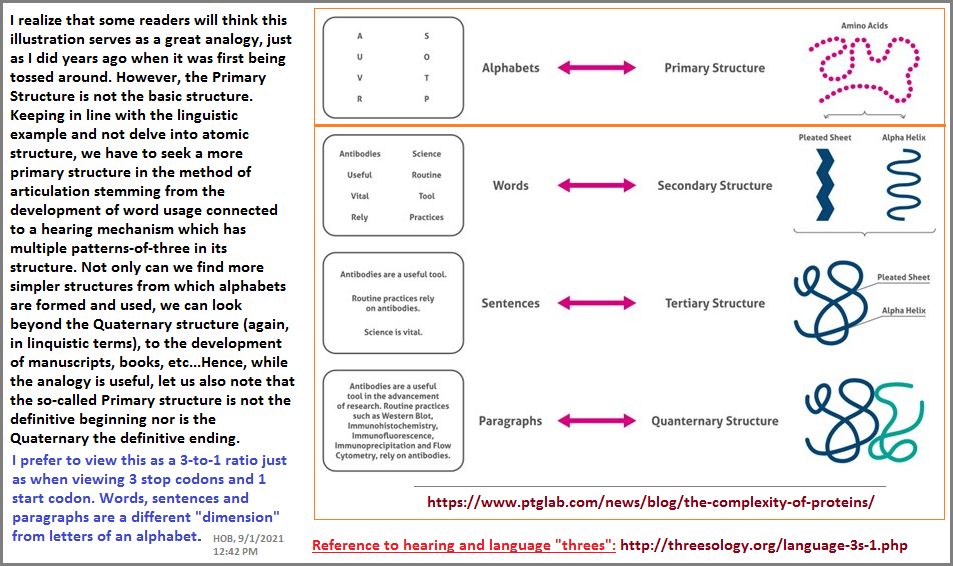

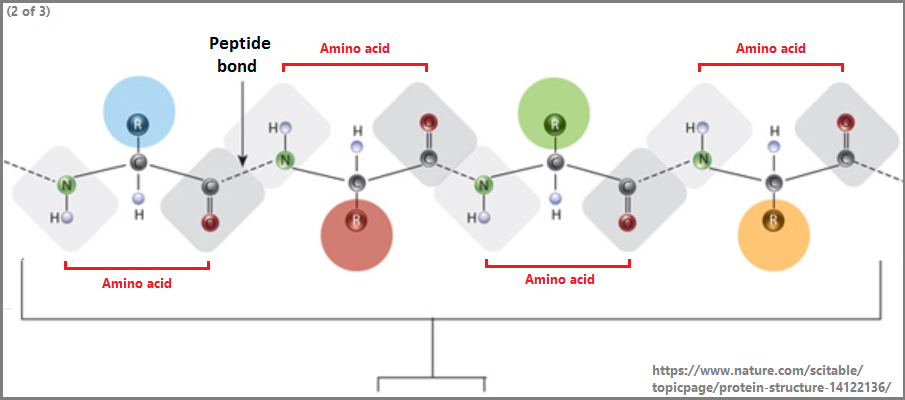
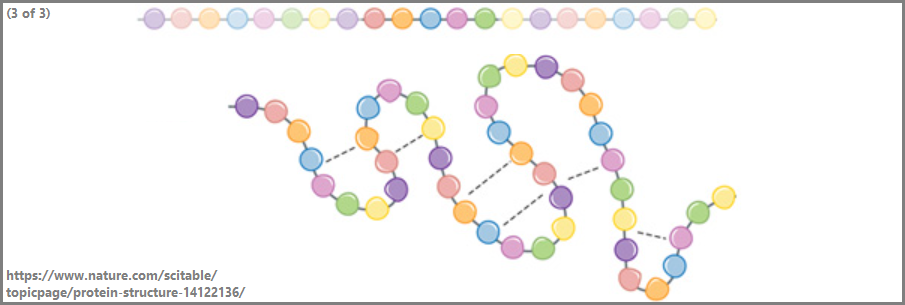
Date of Origination: Friday, 30th July, 2021... 6:38 AM
Date of Initial Posting: Friday, 30th July, 2021... 12:24 PM
Date of Updated posting: Thursday, 2nd September, 2021... 12:43 PM